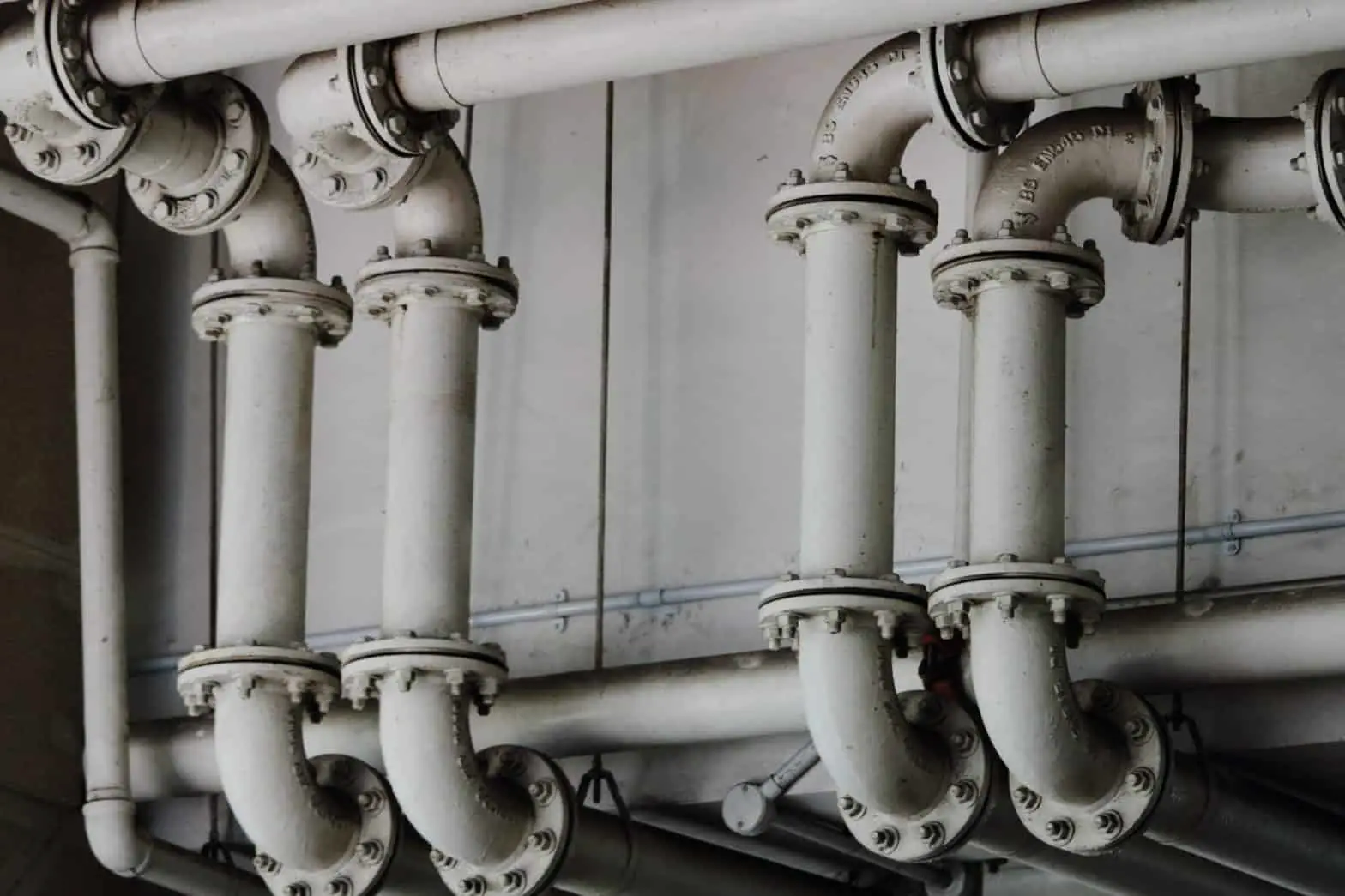Table of Contents
The environment, costs of living, and the future of the planet are on everyone’s minds as we move further forward into the middle of the 21st century. One well-thought-out and reasonable solution to all these problems is the booming tiny house market, with its eco-solutions to the problems of tiny house plumbing.
*This post may contain affiliate links. As an Amazon Associate we earn from qualifying purchases.
Nevertheless, it is not easy to go it alone, building your own. So, we have developed this guide to tiny house plumbing to ensure you are well informed on at least this aspect of tiny house life.
There are so many options and set-ups available for plumbing. On the grid, off the grid, and hybrids are a few of the major setups. What should you do with your grey water?
Should you have one sink or two? Do you want an indoor toilet or an outhouse? Composting or not? Do you need a dishwasher or a washing machine?
Every addition takes space, consideration, and, most importantly, water. Before you begin, think of the desired end result. Lifestyle and what you can live with will determine which build you should select for your tiny house.
What Causes Odors and Overflows in Tiny House Plumbing?
The main cause of odors in tiny house living is the amount of water sitting in your system, not moving. If you hate to dump, and do not do it often enough, then eventually the ghost of dinners past will rear its ugly head and make sure that you do.
There are many simple solutions to these seemingly insurmountable problems. Know your toilet, build a good system, and find creative ways to use less water.
Can Overflows Be Prevented in Tiny House Plumbing?
To some degree, overflows can be prevented in your new build. One-way valves are going to be your best friend. What goes down must not come back up, according to the one-way valve.
But the one piece of absolutely necessary information when preventing overflows is water usage. You need to know how big your grey water and black water tanks are down to the liter. Then, the second most important piece of information: do not put more in than capacity.
In fact, the more successfully you err on the side of caution, the less often you will back up water into the sink. But do not fear this oh-so-dreaded-event.
Many houses with “modern plumbing” even today are run with a septic tank. And yes, this septic tank (functioning off much the same system as an RV) occasionally pushes grey water back into the basement shower.
Can Odors Be Prevented?
Odors are a bit trickier than overflows. First, the strength and timing of your odors are going to be determined by the type of toilet you have set up for tiny house plumbing. If you have a typical RV set up, then you will have a smell about every two weeks that you must take care of: the dreaded dump. Be careful not to stand downwind.
There are solutions. Luckily, you can have a composting toilet. This sounds like an even bigger nightmare, but it is honestly the solution you have been looking for. Without the black water (toilet water—different from the grey water produced by showers and sinks) in your system, there is simply less smell. You also do not need to attend to your system as often. Less water means less dumping. A compost system needs attention about every four months.
What Steps Should You Take?
Know your toilet, know your setup, and pray for the best. Tiny house life can be anything you want it to be. There are houses fully connected to the grid and others in the wilderness. The steps you should take for your house are completely personal to the build.
An interesting and eco-friendly option for grey water has been emerging recently in tiny house literature: the irrigation system. If you own the land, then there is no reason (without a little consideration) not to use your grey water as a way to water your garden!
Using biodegradable soaps and products, it can be as simple as hooking up a house in order to water your garden. Reuse, reduce, recycle is the name of the game moving forward with eco-friendly housing.
Why Go Tiny?
Everyone has their particular reason for escaping the rat race for the great outdoors. Maybe it was a final straw of ever-expanding rent that drove your crazy neighbor into the woods behind the town only to be seen afterwards in the auto parts and home depot stores. He seems happier.
Now, it is your turn to take the plunge into a life you cannot quite imagine. There are many unexpected woes of a tiny house, not all of them matching the house’s sizing. The benefits and elations of the lifestyle shift are worth it. Having your coffee, staring at a mountain, surrounded by deer and odd birds—there is no greater way to elevate the human spirit.
Not to mention the impact on the environment. With the ever-expanding human population and dwindling resources, it becomes more important by the minute to consume less and give more.
Mobility is the highest virtue for some transitioning to the new tiny house lifestyle. Hashtags of #vanlife and #RVliving fill the internet. If you choose to have a tiny house on wheels, then you will gain this freedom as well. Go where you want, do what you want, sleep under the stars! It sounds nice, right?
To Grid or Not to Grid?
There are as many types of tiny house plumbing as there are creative owners of tiny houses. Some systems use water and some are waterless. Some systems require being hooked up to a grid and others are self-contained enough to be taken on the road.
When planning your tiny house’s plumbing system, this is arguably the first consideration you need to make. Will you be on the grid or off of it?
On the Grid
If your system is connected to city water, then it gains the designation of being “on grid.” The grid here refers to the interconnected system of water and electricity that powers most modern cities.
One benefits of this type of system include that waste is usually effectively processed by the urban centers and is therefore something you don’t have to deal with. The downside is that it comes with a water bill you’ve got to pay. Many people are willing to pay the piper when it comes to keeping their pipes running smoothly.
However, tiny house owners are not average people. Many tiny house owners are looking to escape from the work-a-day, bills-to-pay model of living. If you are willing to compost or otherwise deal with the fact of waste in your life, then you may consider living off the grid.
Off the Grid
Being off the grid means that your tiny house plumbing is not connected to city water. Another way to state this is that your system is “self-contained,” where you are dry camping or parked on a tract of land that has no city connections. This can easily be the way to go if the goal for your tiny house living is to get out into nature. If you are tired of the rat race and would rather do for yourself, off grid is a great way to go.
Hybrid On-Grid Off-Grid
Some systems combine an on the grid option with an off the grid option. This provides a lot of flexibility. Your system can handle a week in the woods if your house is mobile enough to get out into the thick of it. But it can also take advantage of RV park hookups or even city water systems if you decide to settle down for a bit.
The disadvantage to a hybrid on-grid off-grid system is, of course, the extra effort and cost. Putting in one system can be complicated enough; many tiny house owners stop after they have established a working system of one type. However, for others, the flexibility is worth the extra effort. If you want your tiny house experience to be marked by a plethora of choices, you cannot beat the hybrid on-grid off-grid system.
Example Types of Tiny House Plumbing
If you are building your own tiny house, the limits to your waste removal systems are the limits of your imagination. However, many have gone before on the path to tiny house living. Their choices have left a legacy that can ease newcomers along the trail.
What follows is an exploration of the two types of plumbing that you might consider before building your tiny house plumbing system.
RV Toilet
RVs are sort of like prepackaged mobile tiny houses in their own right. Some people’s entire tiny house is a modified RV, in fact. You can purchase the toilet element from RVs separately if this seems like the option for your own tiny house.
RV toilets usually use a minimal amount of water when they are flushed. This toilet does need to be hooked up to a water source, and like most RVs, it is both on and off the grid. They will generate blackwater, however. This means you will need to find a dump site to get rid of accumulated waste.
Composting Toilet
What we flush down the S-bends never to be seen again is actually a great source of nutrition. Not for us, but for plants. If you have the ingenuity and the will to make better use of waste, you should look into making a homemade composting toilet.
The easiest version of the composting toilet can be constructed quite cheaply. All you need is a toilet seat, a bucket, and a second bucket of sawdust. The toilet seat gets affixed to the bucket and placed beside the second bucket full of sawdust. You can use this just like a regular flush toilet except for two factors:
One, instead of flushing you will coat the waste with a sprinkle of sawdust. This will help prevent smells like a cat burying its business with kitty litter. Two, you will have to empty the bucket eventually. However, if you’ve been diligent with the sawdust this is no more difficult than cleaning your toilet, which is an inevitability using a regular system. In the end, you’ve got a fresh source of compost to feed your garden.
Conclusion
As with any living style, there are great and not so great outcomes. But if you feel called to the life of the tiny house, then you should at least try it out, or talk to some natives in the tiny house experiment and see how it goes. Dr. Chris Ryan has a wonderful podcast where he discusses the greatest benefits of life in a small van.
The dangers and pitfalls of tiny house plumbing are not as scary as you imagine. Many have tried and succeeded. Between considering the size, shape, and type of tiny house plumbing that you need, there is room for everyone to find an ideal.
Featured Photo by Samuel Sianipar on Unsplash

